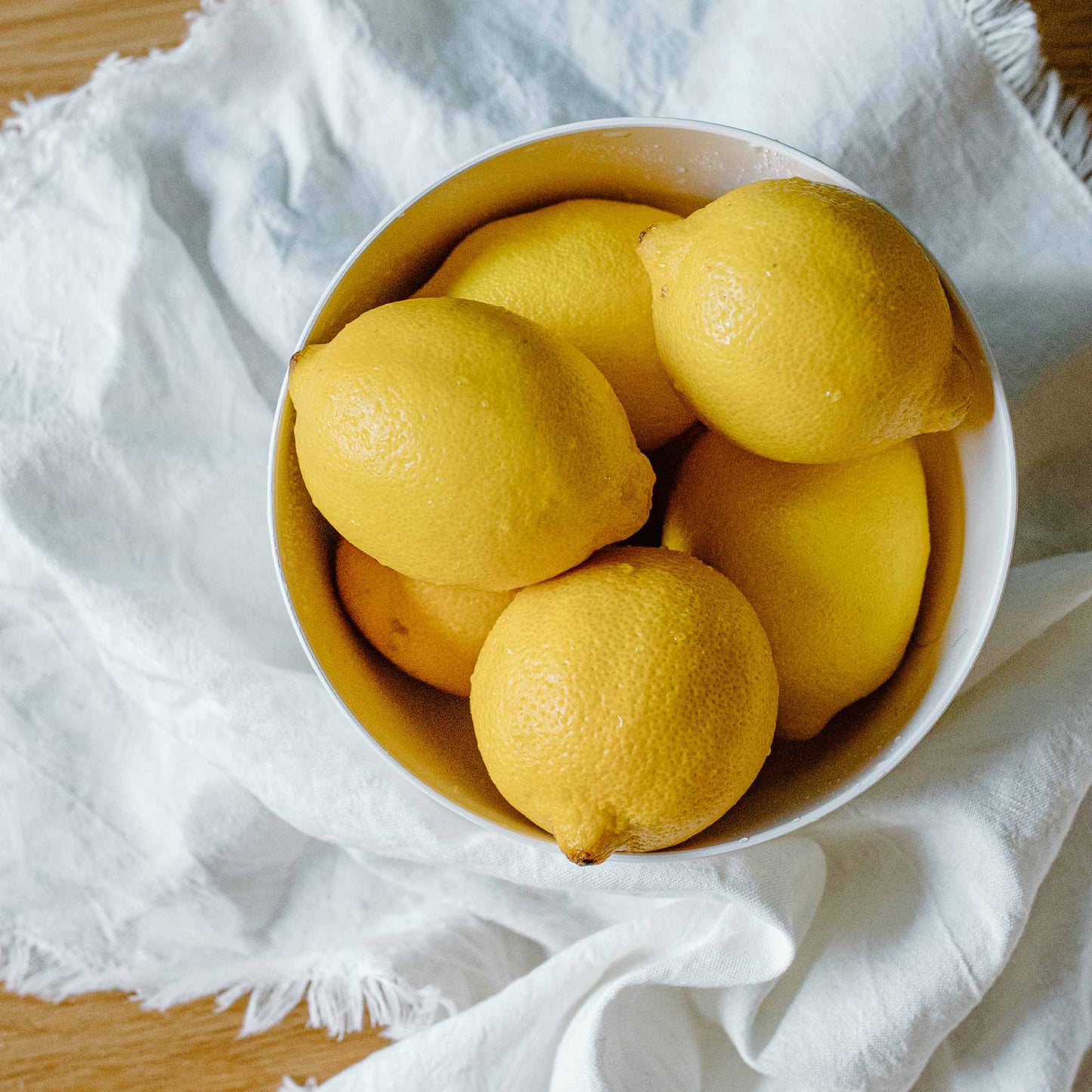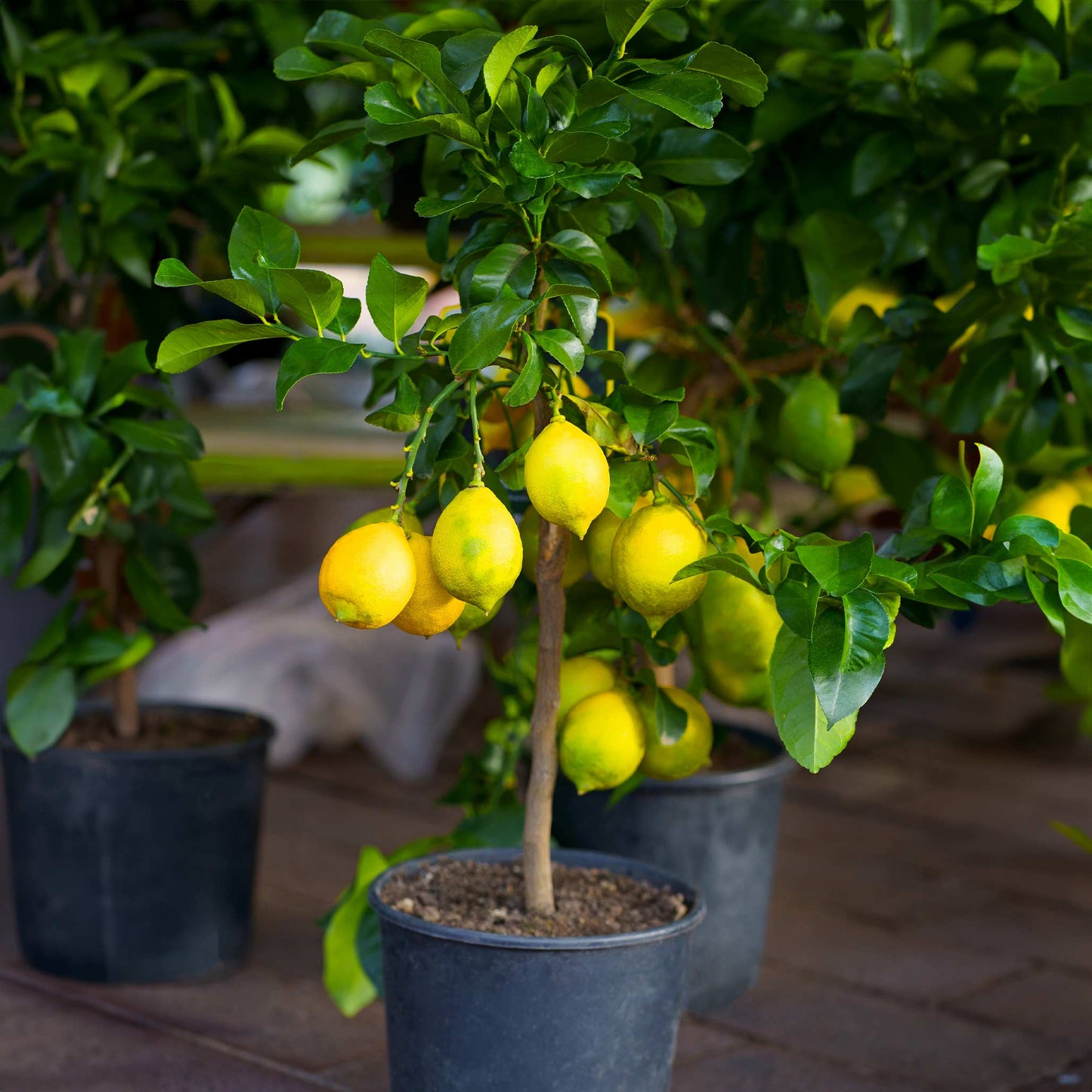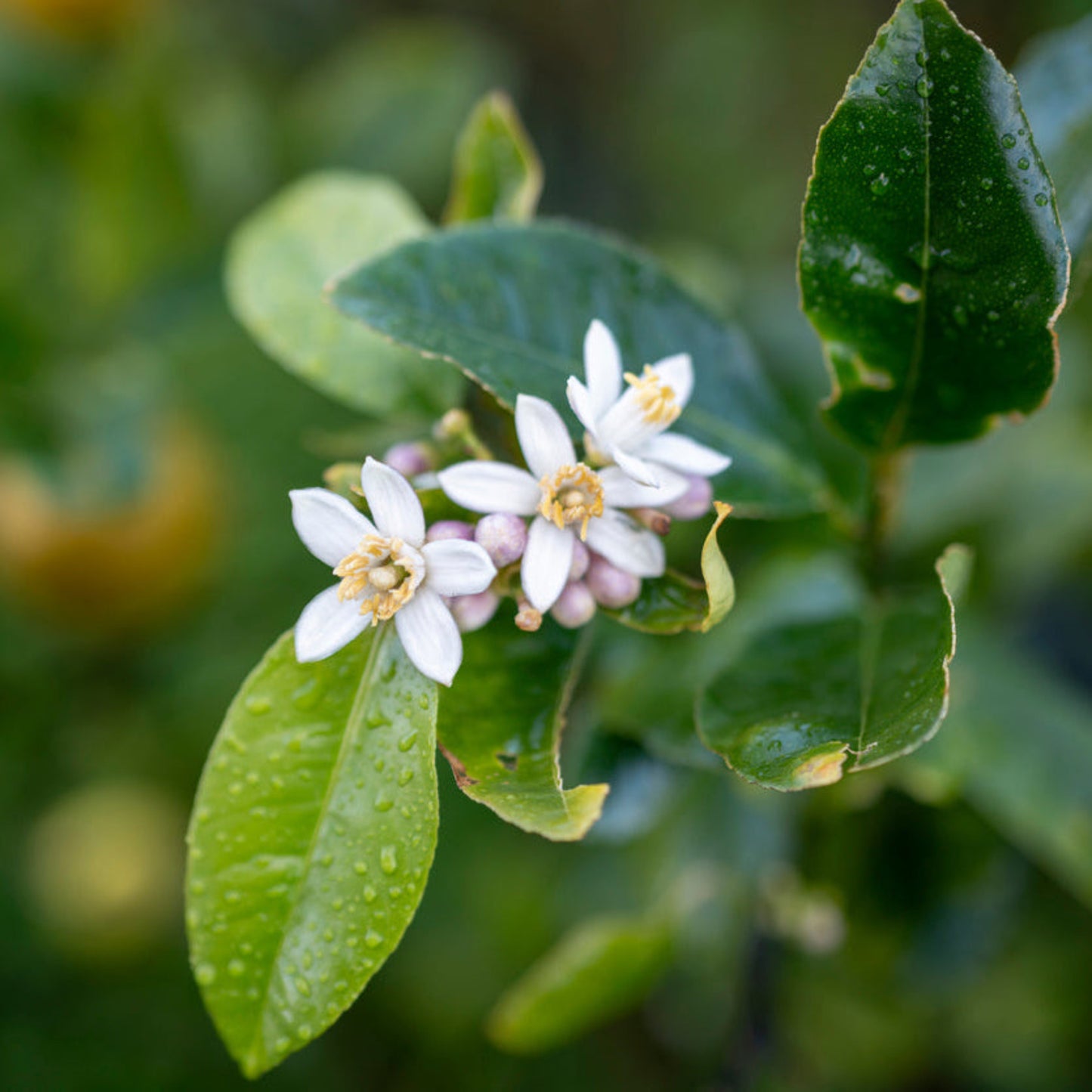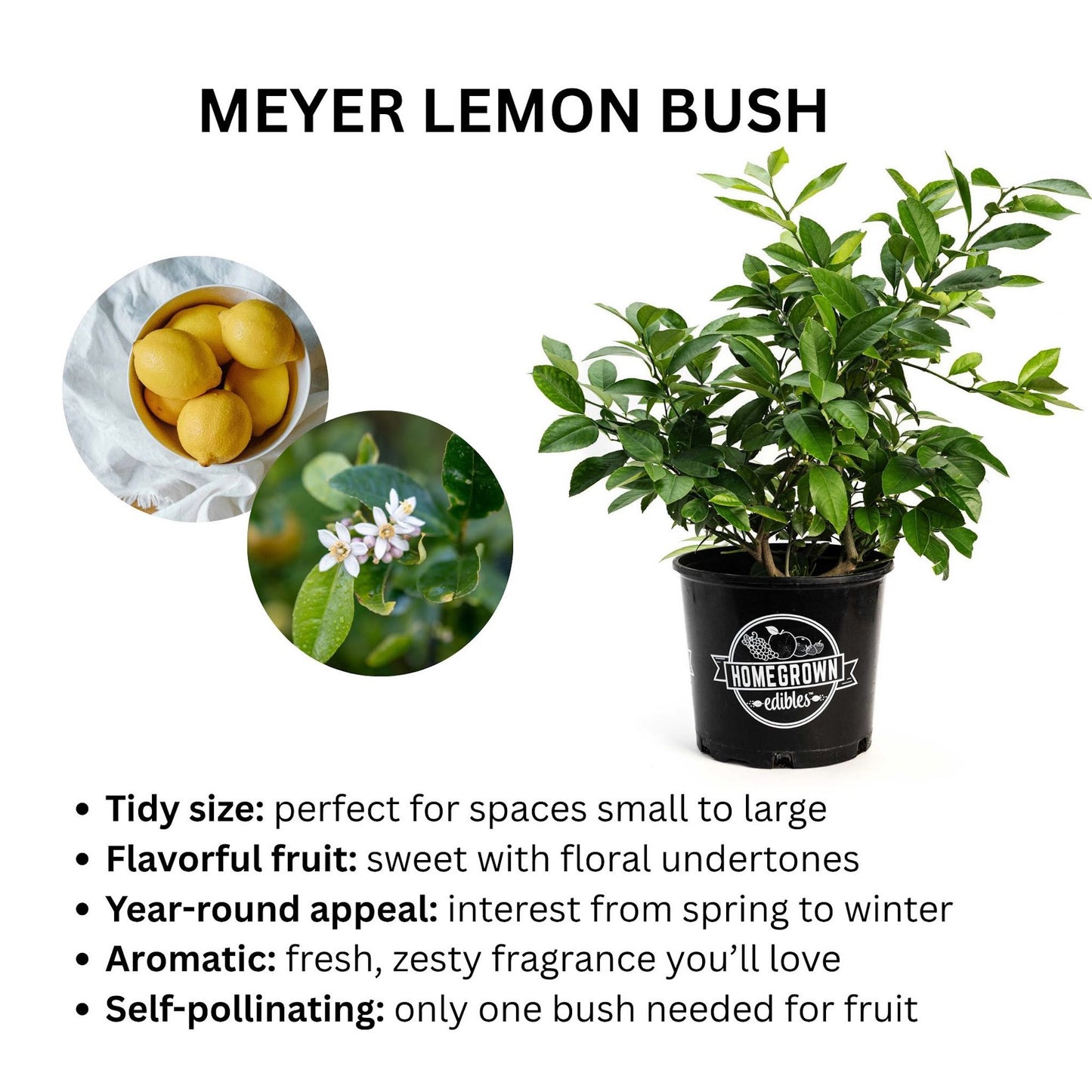Improved Meyer Lemon Bush
Improved Meyer Lemon Bush
SKU:EDB-CIT-MEB-NA-1G
Get Zesty with the Improved Meyer Lemon Bush!
Looking for a twist of citrus to brighten your space? Say hello to the Improved Meyer Lemon Bush - your new favorite homegrown zing! This isn't just any lemon bush; it's a sweeter, juicier, and more resilient variety that's perfect for both green thumbs and gardening newbies.
Why You'll Love It:
- Compact Size: Perfect for patios, balconies, or small gardens, this bush won't outgrow its welcome.
- Year-Round Interest: With glossy evergreen leaves, fragrant flowers, and vibrant fruit, it's a four-season showstopper.
- Improved Hardiness: Tougher against cold snaps, this bush is a little trooper in the face of chilly weather.
Easy Peasy Lemon Squeezy:
Worried about upkeep? Don't be! The Improved Meyer Lemon Bush is low-maintenance, asking for nothing more than some sunlight, a bit of water, and your loving gaze. Plus, you'll get the added bonus of harvesting your own homegrown lemons for lemonade, cooking, or cocktails!
Bring Home the Flavor:
Ready to add a pop of color and a dash of flavor to your life? The Improved Meyer Lemon Bush is just a click away. Plant one today and savor the sweet rewards of your very own lemon paradise!








Product Details
-
Product Category
Edibles
-
Product Subcategory:
Citrus
-
Botanical Name:
Citrus x meyeri 'Improved'
-
Does Not Ship To:
AL, AZ, CA, FL, GA, LA, OR, TX
-
Mature Height:
5-10 ft. unpruned
-
Mature Width:
3-4 ft.
-
Growing Zone:
4-11 patio / 8-11 outdoors
-
Indoor Growing:
Indoors or Patio (non-freezing)
-
Sunlight:
Full Sun
-
Growth Rate:
Moderate
-
Harvest Time:
February-March
-
Bloom Time:
Spring and Fall

Planting Directions
<h2>Planting Your Improved Meyer Lemon Bush</h2>
<ul>
<li>Choose a sunny location with well-draining soil.</li>
<li>Dig a hole twice as wide and the same depth as the root ball.</li>
<li>Remove the bush from the container and gently loosen the roots.</li>
<li>Place the bush in the hole, ensuring it's at the same depth it was in the container.</li>
<li>Backfill the hole with soil, tamping down gently to remove air pockets.</li>
<li>Water thoroughly to settle the soil around the roots.</li>
<li>Apply a 2-3 inch layer of mulch around the base to retain moisture and regulate soil temperature.</li>
</ul>
<h2>Care and Maintenance</h2>
<p><strong>Watering:</strong> Water deeply once a week, allowing the soil to dry out slightly between waterings.</p>
<p><strong>Fertilization:</strong> Feed with a balanced, slow-release citrus fertilizer in spring and summer, following package instructions.</p>
<p><strong>Pruning:</strong> Prune in late winter to early spring to shape the bush and remove any dead or crossing branches.</p>
<p><strong>Pest Control:</strong> Inspect regularly for pests and treat with horticultural oil or insecticidal soap if necessary.</p>
<p><strong>Pollination:</strong> Improved Meyer Lemon bushes are self-pollinating, but you can encourage fruit set by gently brushing between flowers with a small paintbrush or shaking the branches to distribute pollen.</p>
<p><strong>Harvesting:</strong> Harvest lemons when they are fully colored and slightly soft to the touch. Twist and pull gently to remove from the bush.</p>
<p>Monitor your Meyer Lemon Bush regularly and adjust care as needed. With consistent care, your bush will thrive and produce delicious lemons for you to enjoy.</p>

FAQs
<h2>FAQs for the Improved Meyer Lemon Bush</h2>
<h2>1. How do I plant an Improved Meyer Lemon Bush?</h2>
<ol>
<li><strong>Choose the right location:</strong> Select a sunny spot that receives at least 6-8 hours of sunlight daily. Ensure the area has well-draining soil to prevent root rot.</li>
<li><strong>Prepare the soil:</strong> Amend the planting area with compost or well-rotted manure to improve soil fertility and structure. If planting in a pot, use a high-quality potting mix designed for citrus trees.</li>
<li><strong>Planting:</strong> Dig a hole twice as wide and just as deep as the root ball. Gently remove the bush from its container, loosen the roots, and place it in the hole, ensuring the top of the root ball is level with the soil surface. Backfill the hole, gently tamping down the soil to remove air pockets.</li>
<li><strong>Watering:</strong> Water thoroughly after planting to settle the soil around the roots. Mulch around the base to retain moisture and regulate soil temperature.</li>
</ol>
<h2>2. How often should I water my Improved Meyer Lemon Bush?</h2>
<ul>
<li><strong>Regular watering:</strong> Water your Meyer Lemon Bush deeply once a week, allowing the soil to dry out slightly between waterings. Adjust frequency based on weather conditions; more frequent watering may be necessary during hot, dry periods.</li>
<li><strong>Container plants:</strong> Plants in containers may require watering every 2-3 days, especially in warm weather. Ensure the pot has good drainage to prevent waterlogging.</li>
</ul>
<h2>3. What is the best fertilizer for an Improved Meyer Lemon Bush?</h2>
<p><strong>Use a balanced, slow-release citrus fertilizer:</strong> Apply according to the package instructions, typically every 4-6 weeks during the growing season (spring through summer). Reduce feeding in fall and winter when the plant's growth slows. Ensure the fertilizer includes micronutrients like zinc, iron, and manganese, which are essential for citrus health.</p>
<h2>4. How do I ensure good pollination for my Improved Meyer Lemon Bush?</h2>
<ul>
<li><strong>Outdoor plants:</strong> Improved Meyer Lemon Bushes are self-fertile, but attracting bees and other pollinators can enhance fruit set. Plant pollinator-friendly flowers nearby and avoid using pesticides that harm bees.</li>
<li><strong>Indoor/container plants:</strong> If your bush is indoors or not attracting bees, you can hand pollinate by gently brushing a small paintbrush or cotton swab across the flowers to transfer pollen from one flower to another.</li>
</ul>
<h2>5. When and how do I harvest Meyer Lemons?</h2>
<ul>
<li><strong>Harvest timing:</strong> Meyer Lemons typically ripen in late fall to winter. The fruit is ready when it turns a deep yellow color and is slightly soft to the touch.</li>
<li><strong>Harvesting method:</strong> Use a pair of gardening shears or scissors to cut the fruit from the bush, leaving a small portion of the stem attached to prevent damage to the fruit and the bush.</li>
</ul>








